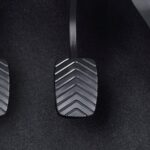When your vehicle requires repairs, a crucial decision arises: choosing between OEM (Original Equipment Manufacturer) and aftermarket car parts. Understanding the distinctions between these options is essential for making informed choices that impact your vehicle’s performance, safety, and your wallet. Let’s delve into the world of Oem Aftermarket Car Parts to clarify your options.
Understanding OEM Car Parts
OEM parts, also known as factory or original parts, are components manufactured by the same company that produced your vehicle or by a company contracted by the vehicle manufacturer. These are the exact parts used when your car was initially assembled.
Opting for OEM parts for repairs ensures compatibility and quality because they are designed specifically for your vehicle model. Whether you’re seeking new or used OEM parts, they guarantee a precise fit and function as intended by the original vehicle engineers. This alignment with the original design can be particularly important for complex systems and maintaining the vehicle’s original performance characteristics.
Exploring Aftermarket Car Parts
Aftermarket parts encompass all components not produced by the original vehicle manufacturer. These parts are made by independent companies and are often presented as “generic versions” of OEM parts. The aftermarket parts industry is vast, offering a wide range of options that can sometimes match or even exceed OEM quality, frequently at a more competitive price point.
When considering aftermarket parts, it’s wise to look for certified options that are specifically designed for your vehicle’s make and model. Organizations like the Certified Auto Parts Association (CAPA) provide certifications that ensure aftermarket parts meet certain standards for safety and compatibility. Choosing certified aftermarket parts can offer a balance between cost savings and maintaining your vehicle’s integrity.
Remanufactured Parts: A Middle Ground
Remanufactured OEM parts present a compelling compromise between brand new OEM and entirely aftermarket solutions. These parts are originally OEM components that have been professionally repaired, restored, and rigorously tested to meet their original performance specifications.
Remanufactured parts offer the benefit of OEM quality and fit but typically come at a lower price, providing a cost-effective way to maintain your vehicle with reliable components. They adhere to the same performance benchmarks as new OEM parts, making them a sustainable and economical choice. In situations where OEM parts are no longer in production, remanufactured or high-quality aftermarket parts become essential alternatives.
Key Differences: OEM vs Aftermarket vs Remanufactured
To further clarify the distinctions, let’s compare OEM, aftermarket, and remanufactured parts across several critical factors:
| Feature | OEM Parts | Aftermarket Parts | Remanufactured Parts |
|---|---|---|---|
| Manufacturing | Original vehicle manufacturer or contractor | Independent manufacturers | OEM parts repaired and restored |
| Fit | Guaranteed, designed for specific model | Variable, certified options ensure better fit | OEM fit, original specifications maintained |
| Price | Generally more expensive | Typically less expensive | Mid-range, less than new OEM |
| Quality | Original quality, known standards | Quality varies; certified options available | OEM quality standards, tested performance |
| Warranty | Manufacturer warranty | Varies by manufacturer, often shorter | Often similar to new OEM parts |
Fit and Compatibility
OEM parts are inherently designed to fit perfectly because vehicles are manufactured with these specific components in mind. While OEM designation doesn’t automatically guarantee superior quality in every aspect, it does provide assurance regarding fit and intended function.
Aftermarket part fit can differ significantly. While some are designed for direct fit replacement, others, especially lower-priced options, may require modifications to properly install. To mitigate fitment issues, prioritize certified aftermarket parts or those explicitly marked as “direct fit replacements.” Selecting the correct part tailored for your vehicle streamlines installation, saving time and potentially reducing labor costs.
Price Considerations
OEM parts are generally more expensive compared to aftermarket alternatives. This price difference often reflects branding, manufacturer markups, and the perception of guaranteed quality and fit.
Conversely, aftermarket parts are frequently more budget-friendly. The competitive aftermarket industry allows for cost efficiencies, and many aftermarket parts achieve comparable quality to OEM parts but at a reduced price. This cost advantage makes aftermarket parts an attractive option for budget-conscious consumers, especially for repairs on older vehicles where maintaining strict OEM specifications might be less critical.
Choosing between OEM and aftermarket oem aftermarket car parts depends on balancing factors like budget, vehicle age, desired quality, and the specific repair needed. Understanding these differences empowers you to make the best decision for your car repair needs.
